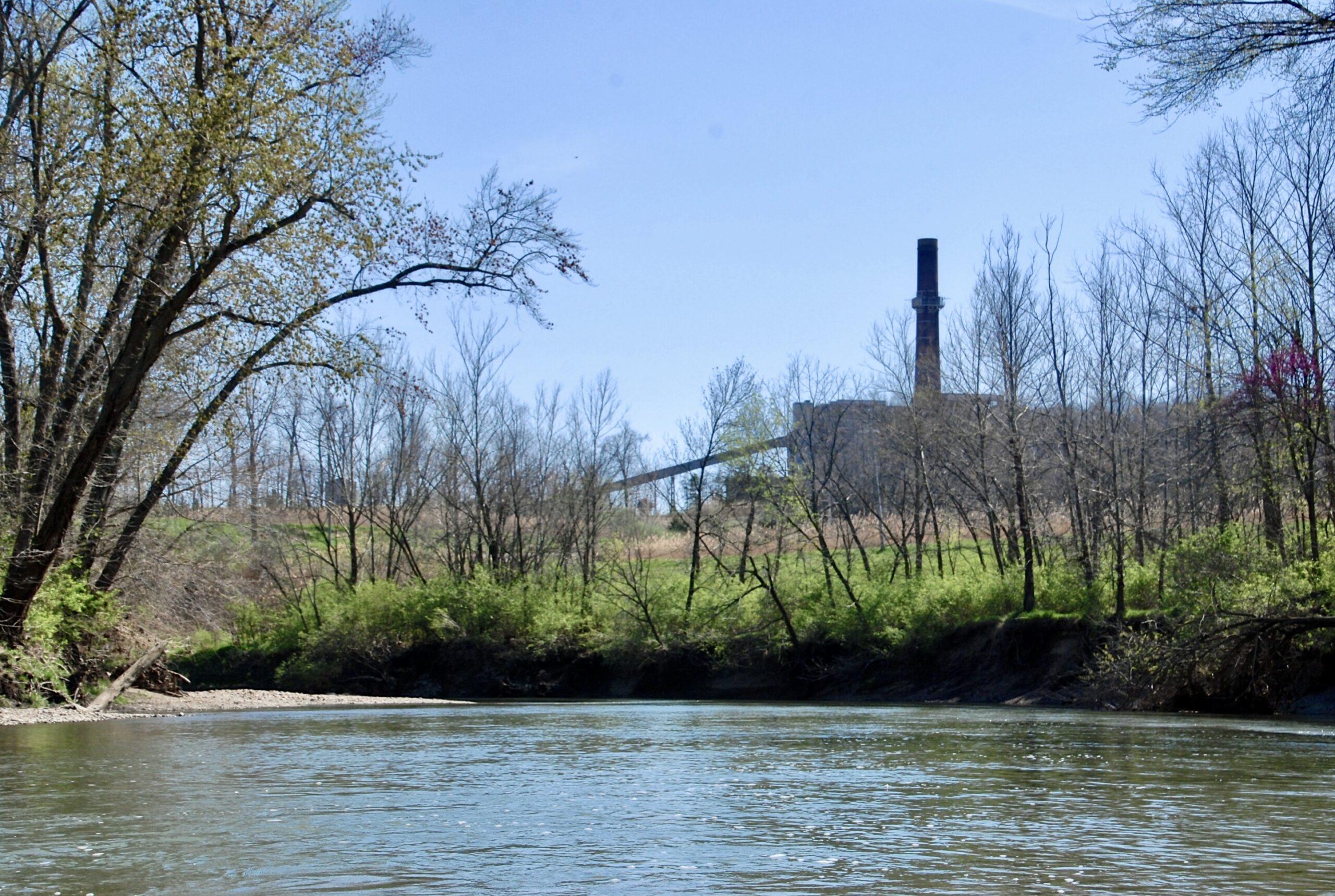Middle Fork Public Information Meeting
On December 9, 2021, Dynegy Midwest Generation held two public information meetings in Danville, Illinois, where they presented their plan to remove coal ash stored along the Middle of the Vermilion - Illinois' only National Scenic River.
Coal ash is the toxic waste left over when coal is burned. It contains harmful chemicals and heavy metals that can cause cancer in humans and can harm or even kill fish and wildlife. Over 3 million cubic yards of toxic waste was placed into three, unlined pits (or impoundments) built in the river's floodplain. near the no-closed Vermilion Power Station. At least two are known to be leaking. The third sits over mine voids, raising concerns over subsidence. Read more about the Middle Fork.
Working with partners Prairie Rivers Network and Earthjustice, Eco-Justice Collaborative led a grassroots campaign to pressure state agencies and Dynegy, owner of the property, to move the coal ash out of the floodplain to an on-site landfill. In June of 2021, Dynegy entered into a formal agreement with the Illinois Attorney General's office to move its ash. The company was required to prepare and present plans for ash removal on or before December 17, 2021. Read more here.
Support for Removal, But Questions Remain
An estimated 80 people attended the two meetings (60 in person and 20 on-line). Many who asked questions had been briefed about the proposal at pre-meetings held by Eco-Justice Collaborative and Prairie Rives Network. The briefings provided context and background which helped attendees develop their questions. Those who spoke expressed concerns over:
- Drinking water - How will residents living near the plant be assured their drinking water is not going to be contaminated?
- On-site landfill - What is the design of the landfill? How large is it? Will it be visible from the river? How can we be sure the landfill won't leak? How will the landfill be monitored?
- Recycling coal ash - Will any of the coal ash be recycled to reduce the volume otherwise stored on the site? Will it be encapsulated? Or will it be moved to a mine void where it might mix with and contaminate groundwater?
- On-gong erosion - How frequently are riverbanks being monitored for erosion? Has there been a plan submitted to applicable agencies for emergency riverbank stabilization? If not, why not? We know that erosion happens suddenly, and that some of the banks are vulnerable.
- Removal of contaminated sediment - Has the sediment in the riverbed from coal ash pollution where seeps are largest been tested? Will it be removed if it is contaminated?
- Release of contaminated water into the river - How will contaminated water proposed to be captured and routed into the North Ash Pit settling basin? Will it be tested and treated before being discharged into the river?
- Reclaim floodplain - Will berms and stone protection along the New East Ash Pit be removed so that the river will be allowed to reclaim its floodplain? How will that area be vegetated and monitored to avoid the invasion of native species?
- Plant demolition - What is the process for coal plant demolition? How will residents, the river, and adjacent property be protected from contaminated dust and release of other pollutants as the plant comes down?
- Protection of Orchid Hill - Will the Orchid Hill Natural Heritage Site be protected, and access maintained?
- Disruption of recreation - Will recreational uses of the river be disrupted during the project?
- Timeline - What is the timeline for this project? Why will it take15 years to complete?
- Financial assurances - Who will bear the long term costs associated with monitoring and maintenance of the landfill? What happens if the property is sold? What happens when there are cost overruns? What assurances do we have that the taxpayer won't be held accountable?
- And more ...
Many of these questions were partially answered - or answers were not able to be provided, given that final plans have not yet been prepared. One thing was made clear - Dynegy Midwest Generation is prepared to do only what they believe is required coal ash rules and the agreement they have entered into with the Attorney General's office. Therefore, it will be important to link questions raised by the public to the rule, and explain to reviewing agencies how the rules apply to ensure a complete, safe, coal ash closure with removal that protects the river; surrounding residents; workers; and the taxpayer.
Next Steps
Dynegy will prepare a summary response to these questions and send them to attendees within 14 days of the meeting. Eco-Justice Collaborative will evaluate these responses, and continue to monitor agency reviews, communicating with the public as plans are finalized and prepared for permit.
Dynegy expects to submit its permit application to the Illinois EPA in February, 2022. The Illinois EPA will review the permit application and (eventually) publish a draft permit with a 45-day written public comment period. At that time we can (and we will) request a public hearing. The Illinois EPA is required to consider and respond to our comments.
Watch this website for more












